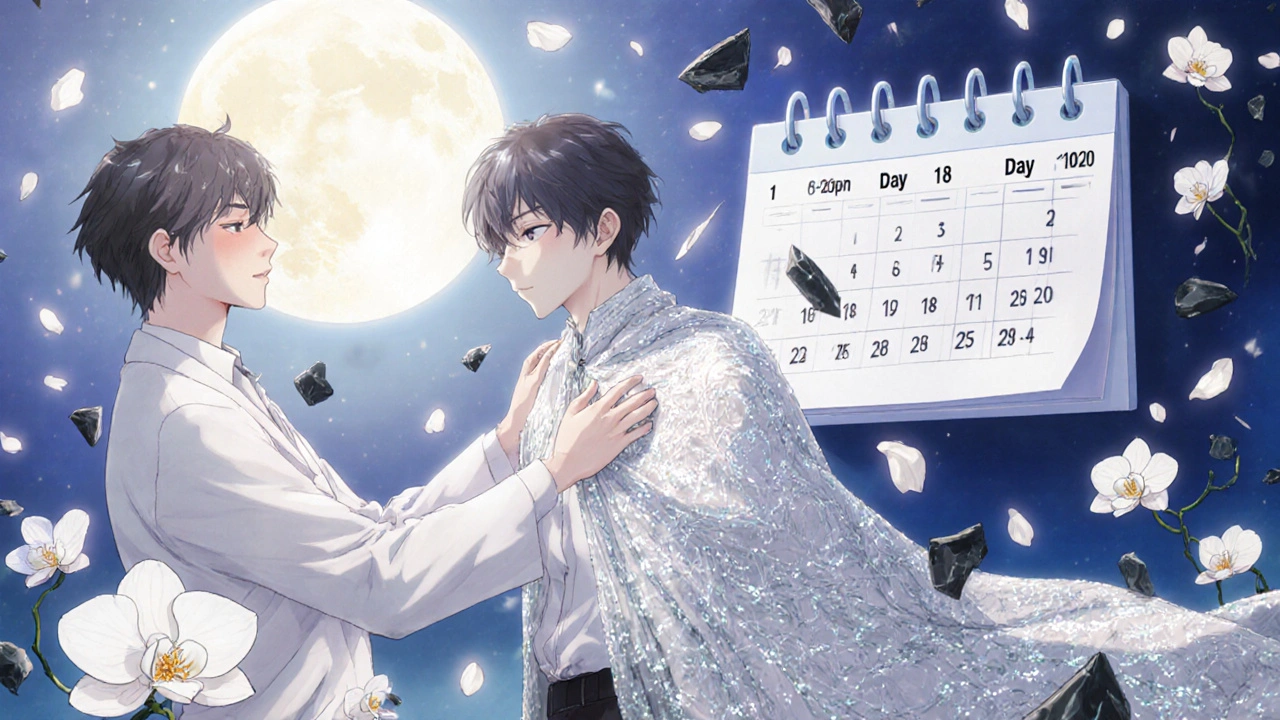Photosensitivity Risk Calculator
Calculate Your Photosensitivity Risk
This tool estimates your risk of sunburn while taking doxycycline or TMP-SMX based on your exposure time and sun protection habits.
Recommended Actions:
When you’re prescribed doxycycline or TMP-SMX (Bactrim, Septra), your doctor is likely treating an infection-maybe acne, a urinary tract infection, or a respiratory bug. But there’s something they might not tell you clearly: doxycycline and TMP-SMX can turn your skin into a lightning rod for sunlight. Even a short walk to your car or sitting by a window can leave you with a painful, red burn that looks like a bad sunburn-but you didn’t spend all day outside.
What Exactly Is Antibiotic Photosensitivity?
Photosensitivity isn’t just getting sunburned faster. It’s a chemical reaction between the drug in your system and ultraviolet (UV) light from the sun. When antibiotics like doxycycline or TMP-SMX absorb UVA rays, they trigger damage in your skin cells. This isn’t an allergy. It’s a direct chemical burn, called a phototoxic reaction. About 95% of cases are this type. The other 5% are photoallergic-where your immune system reacts, causing a delayed, itchy rash that looks like eczema. But for doxycycline and Bactrim, it’s almost always the burn version.Here’s what happens: your skin’s minimum erythema dose (MED)-the smallest amount of UV needed to cause redness-drops by up to 50%. That means if you normally need 15 minutes of sun to burn, you might burn in 7 or 8 minutes while on these drugs. And it doesn’t take a beach day. A 10-minute commute, lunch outside, or even sitting near a sunny window can be enough.
Why Doxycycline and TMP-SMX Are the Worst Offenders
Not all antibiotics cause this. Penicillin? Rarely. Amoxicillin? Almost never. But doxycycline and TMP-SMX are consistently ranked among the top two antibiotics linked to photosensitivity.Doxycycline, a tetracycline, is especially risky. Studies show about 20% of people taking 200 mg daily develop phototoxic reactions. In one study, 2 out of 10 patients on doxycycline got severe sunburns within hours of minimal sun exposure. The drug absorbs UVA light (320-400 nm), which penetrates glass and clouds. So you can burn indoors, in a car, or on a cloudy day. Demeclocycline, a cousin of doxycycline, is even worse-9 out of 10 patients in one trial developed burns.
TMP-SMX (Bactrim) works differently but is just as dangerous. It’s a combo of sulfamethoxazole and trimethoprim. Studies show reactions can happen after just 30 minutes in the sun. What’s more, the risk doesn’t vanish when you stop taking it. While doxycycline-related sensitivity usually fades within a few days of stopping, Bactrim can leave your skin vulnerable for weeks after your last pill. One patient reported a severe burn two weeks after finishing a 10-day course.
How Bad Can It Get?
The reactions aren’t just uncomfortable-they’re dangerous. You might see:- Red, painful, burning skin that looks like a sunburn
- Blisters or peeling on exposed areas: face, neck, arms, hands
- Dark patches or hyperpigmentation that can last months
- Increased risk of long-term skin damage, including premature aging and skin cancer
It’s not just about the burn. Many people stop taking their antibiotics because the reaction is so bad. That’s risky-unfinished courses can lead to antibiotic resistance, worse infections, or even hospitalization. The goal isn’t to scare you-it’s to help you finish your treatment safely.

What You Need to Do: Sun Safety That Actually Works
Standard sunscreen won’t cut it. Here’s what you need to do, based on FDA and Skin Cancer Foundation guidelines:- Use broad-spectrum SPF 30+ daily-even indoors. Look for zinc oxide or titanium dioxide. Reapply every two hours if you’re outside, or after sweating or wiping your face.
- Avoid 10 a.m. to 4 p.m. That’s when UVA rays are strongest. Schedule walks, errands, or outdoor time for early morning or late afternoon.
- Wear UPF 30+ clothing. Regular cotton shirts only block about UPF 5-10. Buy sun-protective clothing labeled UPF 30 or higher. Long sleeves, pants, and a wide-brimmed hat are non-negotiable.
- Wear UV-blocking sunglasses. Your eyes are sensitive too. UVA can damage the lens and retina.
- Don’t trust windows. UVA passes through glass. Sitting by a window at work or in your car? You’re still exposed. Use window film if you’re parked in direct sun.
- Keep going after your last pill. For doxycycline, protect yourself for 3-5 days after finishing. For Bactrim, keep up protection for at least 2 weeks. Some experts recommend 4 weeks.
What Doesn’t Work
Many people think they’re safe if they:- Only wear sunscreen on vacation
- Use SPF 15 because they’re “not outside much”
- Believe clouds or winter mean no risk
- Think a “base tan” protects them
All of these are myths. SPF 15 blocks about 93% of UVB, but UVA? Not enough. Tanning doesn’t shield you-it’s skin damage. And yes, you can burn in December. UVA rays are consistent year-round.
What Your Doctor Should Tell You
Too often, patients are handed a prescription with a tiny warning in the fine print. That’s not enough. Your provider should:- Explicitly say: “This medicine makes you burn easily in the sun.”
- Give you a printed sun safety sheet.
- Ask if you’re already using sunscreen or have a history of sunburns.
- Warn you about the extended risk with Bactrim.
If they don’t, ask. Say: “I’ve heard this can cause sun sensitivity. What exactly should I avoid?” Most doctors know-but they assume you’ll read the leaflet. Don’t rely on that.

What to Do If You Get Burned
If your skin turns red, hot, or starts peeling:- Get out of the sun immediately.
- Cool the area with damp cloths-no ice.
- Use aloe vera or hydrocortisone cream (1%) to soothe.
- Take ibuprofen for pain and inflammation.
- Stay hydrated.
- Call your doctor if blisters form, fever develops, or the burn covers a large area.
Don’t pop blisters. Don’t peel skin. Let it heal. And if you’re still on the antibiotic, don’t stop it unless your doctor says so.
When to See a Dermatologist
If you’ve had a reaction before, or if you’re on long-term doxycycline (like for acne), see a dermatologist. They can:- Confirm if it’s photosensitivity or something else
- Recommend stronger sun protection products
- Discuss alternative antibiotics if the risk is too high
Some people with chronic acne on doxycycline switch to minocycline, which has lower photosensitivity risk. Others go to topical treatments or isotretinoin. But never switch on your own.
Final Reality Check
This isn’t a “maybe” risk. It’s a 1 in 5 chance with doxycycline. And with Bactrim, the clock keeps ticking after you stop. Ignoring it can mean weeks of pain, scarring, or worse. But here’s the good news: if you follow these steps, you can take your antibiotic safely. You don’t have to live in the dark. You just need to be smart about the light.Protect your skin like you protect your teeth-daily, consistently, and without excuses. Your skin will thank you. And so will your treatment plan.
Can I still go outside if I’m on doxycycline or Bactrim?
Yes, but you need to be extremely careful. Avoid direct sun between 10 a.m. and 4 p.m. Wear UPF 30+ clothing, a wide-brimmed hat, and broad-spectrum SPF 30+ sunscreen. Reapply every two hours. Even sitting near a window can trigger a reaction, so take the same precautions indoors.
How long after stopping Bactrim am I still at risk?
You can remain photosensitive for up to 2-4 weeks after your last dose of Bactrim. Unlike doxycycline, which clears from your system faster, the sulfamethoxazole component lingers in skin tissues and continues to react with UV light. Continue sun protection for at least two weeks after finishing the course, and longer if you’re prone to sunburns.
Does sunscreen prevent all photosensitivity reactions?
No. Sunscreen reduces risk but doesn’t eliminate it. UVA rays penetrate deep into the skin and can still trigger reactions even with SPF 50. That’s why you need layered protection: clothing, shade, timing, and sunscreen. Relying only on sunscreen is like wearing a raincoat in a hurricane-it helps, but it’s not enough.
Are there antibiotics that don’t cause sun sensitivity?
Yes. Penicillins (like amoxicillin), cephalosporins (like cephalexin), and macrolides (like azithromycin) have very low or no risk of photosensitivity. If you’re on doxycycline or Bactrim and keep getting sunburns, talk to your doctor about switching to one of these alternatives-especially if you’re on long-term treatment.
Can I get a tan while on these antibiotics?
No. Any darkening of your skin while on doxycycline or Bactrim is not a tan-it’s a sign of skin damage. You’re at higher risk of hyperpigmentation, which can leave dark patches that last months or years. Tanning beds are especially dangerous and should be avoided entirely while on these drugs.
Why does my skin still burn even when I’m inside near a window?
Because UVA rays, which cause photosensitivity with these antibiotics, pass right through glass. Regular windows block UVB (which causes sunburn), but not UVA. So if you sit by a sunny window at home, in your car, or at work, you’re still getting enough exposure to trigger a reaction. Use UV-blocking film or stay away from direct sunlight through windows.

